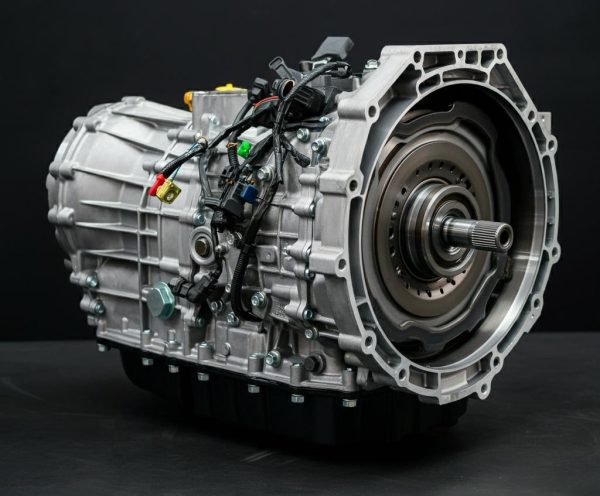As we saw in this article outlining the difference between AMTs and non-synchro gearboxes, an automated manual transmission uses electronics to change gears in a manual gearbox.

The heart of an AMT is its Electronic Control Unit (ECU). The ECU continuously monitors various parameters like engine speed, vehicle speed, accelerator position, load, and road grade.
Based on these inputs, the ECU determines the optimal gear for the current driving conditions. It aims to balance performance, fuel efficiency, and engine load.
Unlike a traditional manual transmission, the clutch in an AMT is controlled electronically. The ECU engages and disengages the clutch as needed during gear changes.
When a gear change is needed, the ECU activates pneumatic or hydraulic actuators. These actuators physically move the gear selector forks, similar to how a driver would move the gear stick in a manual transmission.
The system adjusts engine speed to match the new gear ratio, similar to how a skilled driver would “rev-match” in a manual transmission.
The driver typically has a selector for drive, neutral, and reverse. Some AMTs allow manual override, where the driver can suggest gear changes via buttons or a shift lever.
Many modern AMTs have adaptive capabilities, learning from driving patterns to optimize shift points and strategies.
AMTs often include safety features like preventing shifts that could over-rev the engine or stall the vehicle.
The future of AMT gearboxes might include 3D topographical maps that enable a gearbox to change to the correct gear just before getting to a hill.

Key Advantages:
- Combines the efficiency of a manual transmission with the ease of use of an automatic.
- Reduces driver fatigue, especially in heavy traffic or hilly terrain.
- Can lead to improved fuel efficiency compared to traditional automatics.
- Extends clutch life by optimising engagement and disengagement.
While AMTs offer many benefits, they are more complex than traditional manual transmissions, which can lead to higher initial costs and potentially more sophisticated maintenance requirements.
